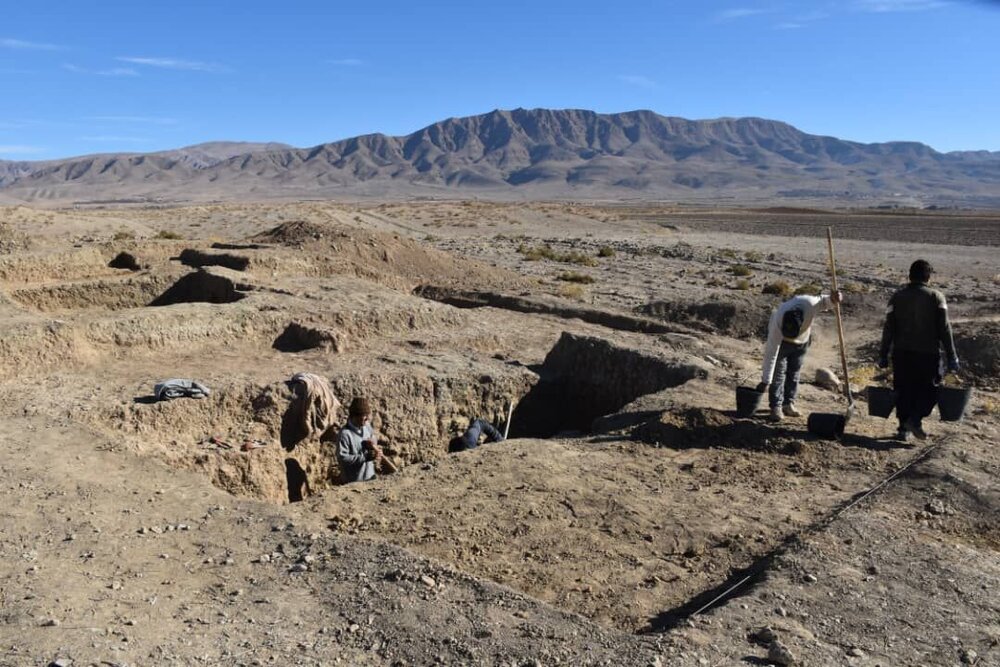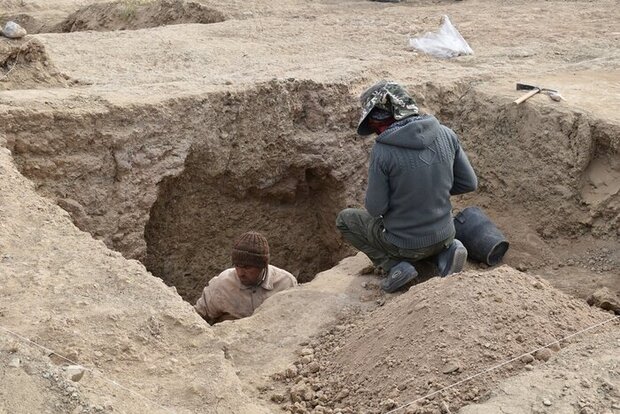Iranian, French archaeologists uncover clues about ancient settlements

TEHRAN – A team of Iranian and French archaeologists has discovered clues about ancient settlements in northeast Iran.
“We recently unearthed more parts of a previously discovered monument in Viran-Shahr, which is situated near the city of Faruj in North Khorasan province.…. The [ruined] ramparts and towers of the monument were amongst segments that were unearthed,” Iranian archaeologist Meysam Labbaf-Khaniki said, IRNA reported.
Experts from the Louvre and the University of Tehran involved in a project recently came to an end as the third season of excavation on Viran-Shahr. The team was jointly headed by Labbaf-Khaniki of Iran’s Research Institute of Cultural Heritage and Tourism, and Louvre Museum’s Rocco Rante from the University of Provence Aix-Marseille.
“Part of the recent digs were in line with the previous season of excavation, which conducted last year,” Labbaf-Khaniki said.
“In addition to architectural remains, significant quantities of Parthian and Sassanid period pottery pieces have been obtained from the cultural layers of the site, which provides a suitable criterion for identification and typology of pottery of the historical period of North Khorasan.”
The development of historical studies and archaeological excavations in this region will shed new light on many ambiguities about the history of the early Parthians, the Iranian archaeologist said.

“Many historians and archaeologists believe Viran-Shahr is the birthplace of the Parthian Empire (247 BCE-224 CE), accommodating the first administrative institutes of the dynasty,” said Labbaf-Khaniki, who is also a professor at the University of Tehran.
“The latest excavations led to significant findings of the historical architecture of the Parthian Empire and the Sassanid Empire (224-651 CE),” he added.
The architectural remains indicate that Viran-Shahr was surrounded by a square-shaped fence, stretched over 14 hectares, Labbaf-Khaniki said, adding, “Last year’s extractions unearthed parts of an architectural complex located on a hill in the southern part of the area.”
Khorasan -- meaning the “Land of the Sun” -- is a historical region and realm comprising a vast territory now lying in northeastern Iran, southern Turkmenistan, and northern Afghanistan. The historical region extended, along the north, from the Amu Darya (Oxus River) westward to the Caspian Sea and, along the south, from the fringes of the central Iranian deserts eastward to the mountains of central Afghanistan.
The history of the area stretches back to very ancient times. It was part of the Achaemenian Empire of the 6th to 4th century BC and the Parthian empire, which spanned from the 3rd century BC to the 3rd century CE.
Parthian Empire (247 BC – 224 CE), also known as the Arsacid Empire, largely adopted the art, architecture, religious beliefs, and royal insignia of their culturally heterogeneous empire, which encompassed Persian, Hellenistic, and regional cultures. At its height, the Parthian Empire stretched from the northern reaches of the Euphrates, in what is now central-eastern Turkey, to eastern Iran.
The Sassanid era (224 CE–651) is of very high importance in the history of Iran. Under Sassanids, Persian art and architecture experienced a general renaissance. Architecture often took grandiose proportions such as palaces at Ctesiphon, Firuzabad, and Sarvestan that are amongst highlights of the ensemble.
AFM

Leave a Comment